There’s more to New York than its namesake city. In addition to plenty of beautiful countryside, New York also has an outstanding array of minerals and gemstones that can be found. From the famous Herkimer Diamonds to lesser known minerals like diopside… all of them can be found in this state.
So, let’s get down to it and I’ll show you a list of some of the rocks, minerals, and gems in the state of New York.
Rocks, Minerals, and Gemstones Found in New York
1. Quartz (Herkimer Diamonds)
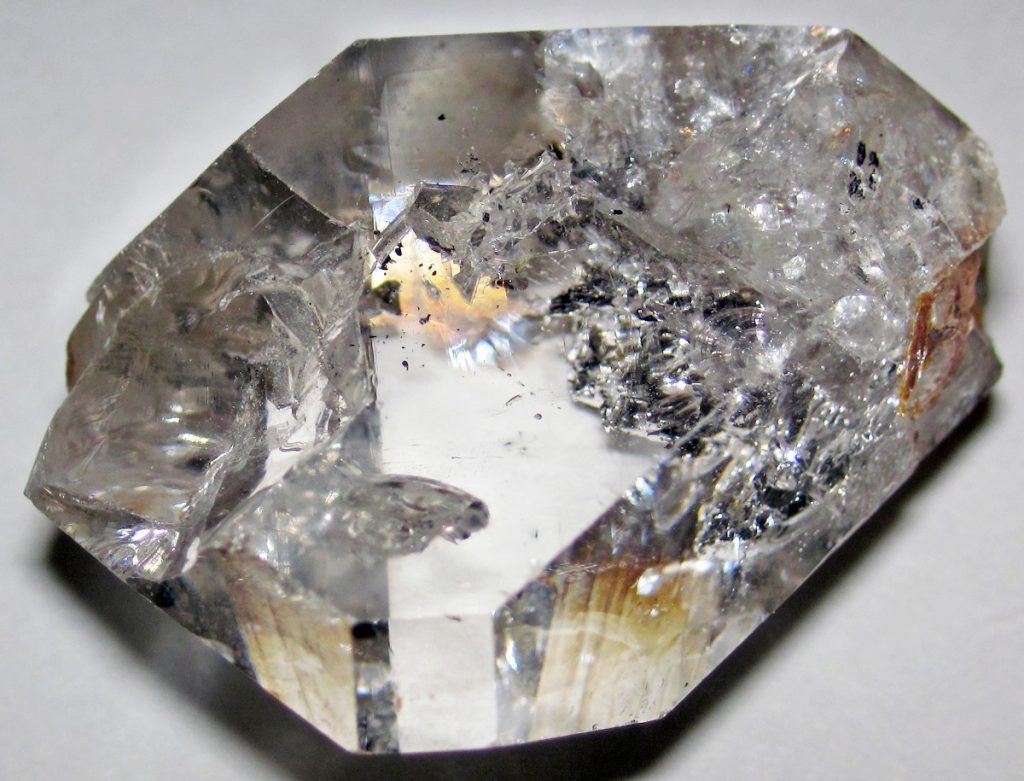
We all know quartz, for many of us it was the first stone to catch our interest. It’s a macrocrystallized form of silica, creating hexagonal crystals of varying lengths with pyramidal termination. The form is well known enough that most crystals in media are just quartz drawn with different colors.
There are many famous varieties of quartz, but when it comes to clear quartz there’s one real prize: Herkimer Diamonds. These are simple quartz crystals that are terminated on both ends, an extreme rarity compared to the more common single-terminated crystals that are found across the world.
Herkimer Diamonds are one of the most famous quartz varieties, known for their clarity and well-formed pyramids. Their formation in dolomite was exceptionally slow, which is why the crystals are so exceptionally well formed.
These “diamonds” are found in very few places in the world, and those formed in the dolomite outcroppings near Herikmer are widely considered the best. They’re primarily found on paid digs, which are readily available for those interested.
2. Garnet
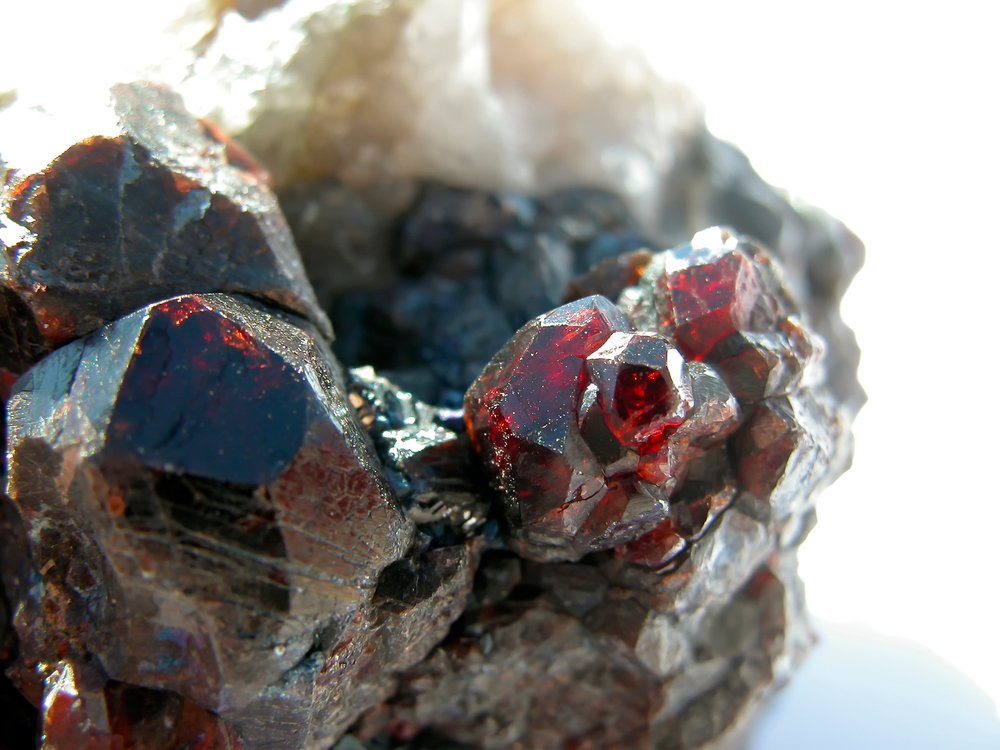
The gem of New York state is the humble garnet. These gemstones are usually known to be red in color, and those coming from New York fit the bill there. While much garnet is heavily included, gem-grade material can be found and faceted to create beautiful stones with a deep hue.
The garnet family includes many different stones. These range from the yellow-to-orange spessartite garnets to the more exotic bright green tsavorites. There are even blue varieties that show up in vanishingly small quantities across the planet. These blue garnets are almost priceless, commanding prices that rival or exceed the classic precious gemstones like sapphire and emerald.
The garnets found in New York are of the almandine and pyrope families. Almandine is the most common garnet and much of the material ends up being used as an abrasive for industrial applications. Coloration in the state is usually of the red variety, but purple, green, and yellow stones also show up on occasion.
There are several paid dig sites available for those looking for garnet, as well as mine tours available. Perhaps the most famous of these is the Barton Garnet Mine, which is also the world’s oldest functioning industrial garnet mine.
3. Calcite
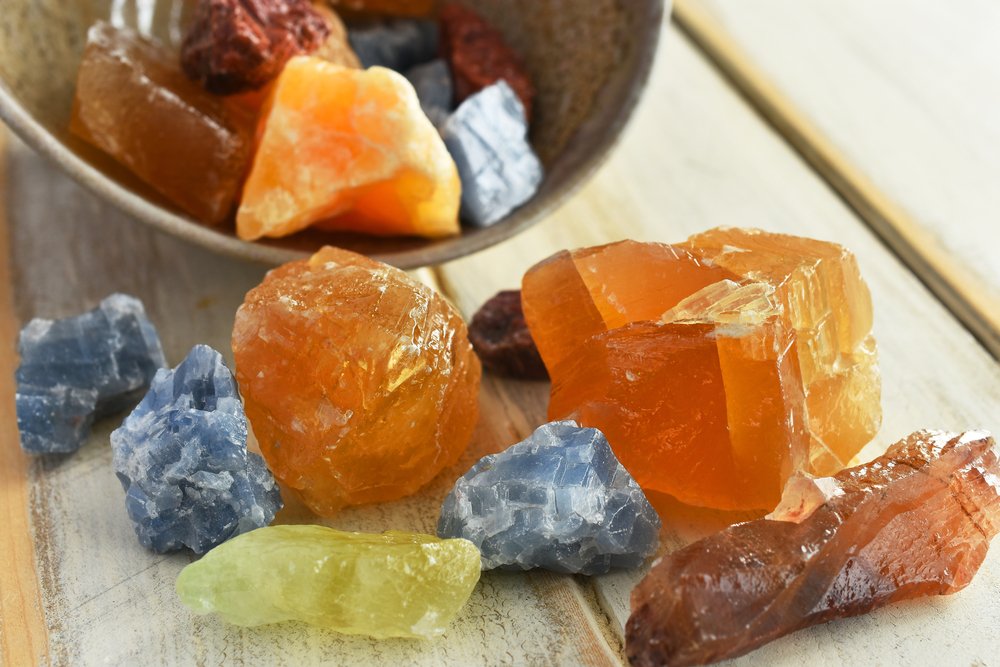
Calcite is a very common mineral, showing up as a crystallized form of calcium carbonate. Calcite crystals are beautiful, if fragile, and are a frequent site in collections of rock collectors. In other cases, calcite is carefully removed from other specimens like quartz since it can also present as a thin white film of crystals on other minerals.
Calcite is just one form of the mineral calcium carbonate. Calcium carbonate makes up many things in nature and it’s one of the few minerals that also has a biological origin on occasion. The shells of many mollusks are made of calcite, with a few being the polymorph aragonite. Calcite forms more quickly than most minerals, and its growth can be measured in stalactites in some caves.
Calcite, as a pure mineral, appears as a white prismatic crystal. Quite often, however, it’s seen in a massive form of interconnected crystalline growth. On many occasions, it will also have impurities that grant color to the crystal. Those found in this state tend to be of the “honey” variety, which is deep amber to light yellow color. Blue specimens, often massive, can also be found in a few locations.
Calcite can be found at many locations in the state, most of them concentrated east of Lake Ontario and along the border with Canada. There is also a strong concentration in the southeast of the state along the Hudson River.
4. Diopside
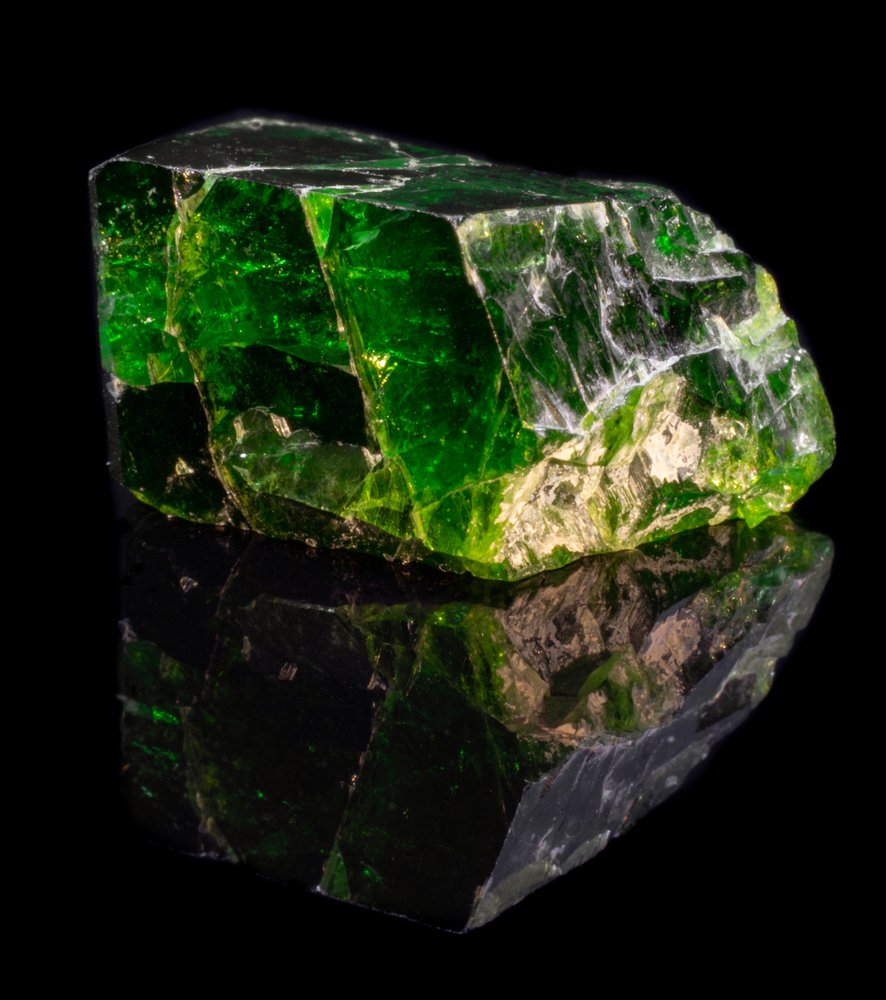
Diopside is a mineral that contains magnesium and calcium, creating monoclinic crystals. It’s most often white, but there are two varieties used as gemstones. These are chrome diopside, a personal favorite, and black star diopside. This mineral is a bit soft, at 5.5, which restricts gemstone use to pendants and earrings to avoid damage to the stone.
Most diopside isn’t of gem quality. Instead, it’s often found intermixed with malfic (low silica) stones in small quantities. Much of the material doesn’t even emerge as fully formed crystals, instead being part of the granular structure of other stones. Diopside was primarily used as a precursor to the chrysotile fibers known as asbestos, but this requires heavy alteration and diopside doesn’t contain it when it’s removed from the ground.
Diopside has some serious potential in technology that is being investigated. In various forms, it’s been used as a way to strengthen glass and glass-ceramic materials. It’s even being investigated as a way to help out with nuclear waste disposal.
If you want to acquire a sample of New York’s diopside the following areas are your best options:
- Near Amity
- Near Ossining
- Lawrence County
These areas are known to have higher quality crystals, but the majority of the material in the state is industrial in quality.
5. Tremolite
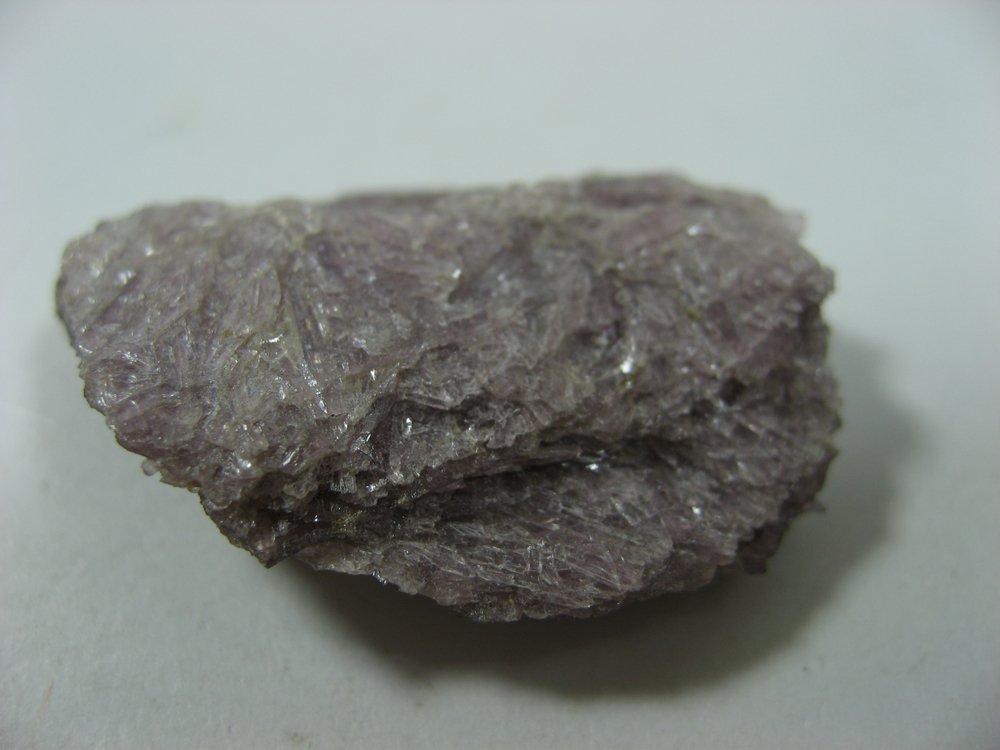
Tremolite is a strange, fibrous crystal. It’s actually one of the forms of asbestos, although it lacks the danger of chrysotile asbestos. While it’s fibrous, it still grows in long crystals with some clarity, creating very unique-looking mineral samples. The material is mainly of interest to collectors these days since asbestos has been replaced with safer materials.
Tremolite is actually an indicator of metamorphic geological activity. It converts to diopside with high enough pressure and heat. Nephrite jade is actually a form of tremolite as well, making this an even more important mineral for those who study the earth. It appears that the mineral becomes more green as the iron content increases.
Tremolite crystals can be found in New York. The material is only mined commercially in India these days and is considered a contaminant in the majority of mines where it’s found. As such, there are still large deposits of it that haven’t been exploited. It’s an easy score in a few locations in the state.
I’d recommend taking a look at Saint Lawrence County, where there are a few known locations that host great examples of the mineral.
6. Tourmaline
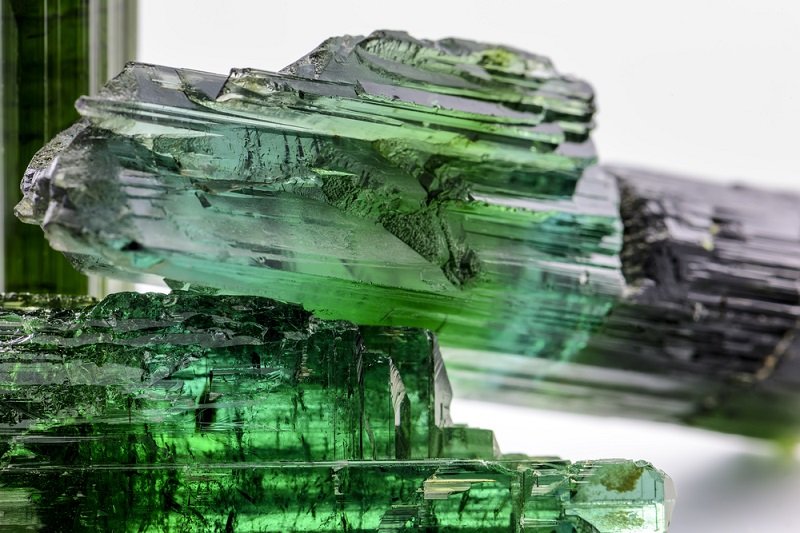
Tourmaline is a crystal of many faces. Or, more specifically, of many colors. Tourmaline can be found in a bewildering array of colors, from the unique two-tone watermelon tourmaline to the deep red of rubellite. The stone makes a splash wherever it goes. Even the most common, simple variety of black tourmaline (called schorl) is a beauty of nature.
Tourmaline is a common find in pegmatites. Pegmatites are extremely coarse-grained stones that have large crystals of different minerals making them up. They often contain many different kinds of crystals and tourmaline is among the most commonly found. The vast majority of these will be schorl, with other finds being dependent on the region.
The main variety of colored tourmaline found in New York is a green variety known as uvite. This forms into dark, green-colored crystals with a unique structure not seen in most samples of the material. This unique material is highly sought after by tourmaline connoisseurs.
Tourmaline can be found in pegmatites across the state, the best sites are along the Hudson River.
7. Labradorite/Rainbow Moonstone
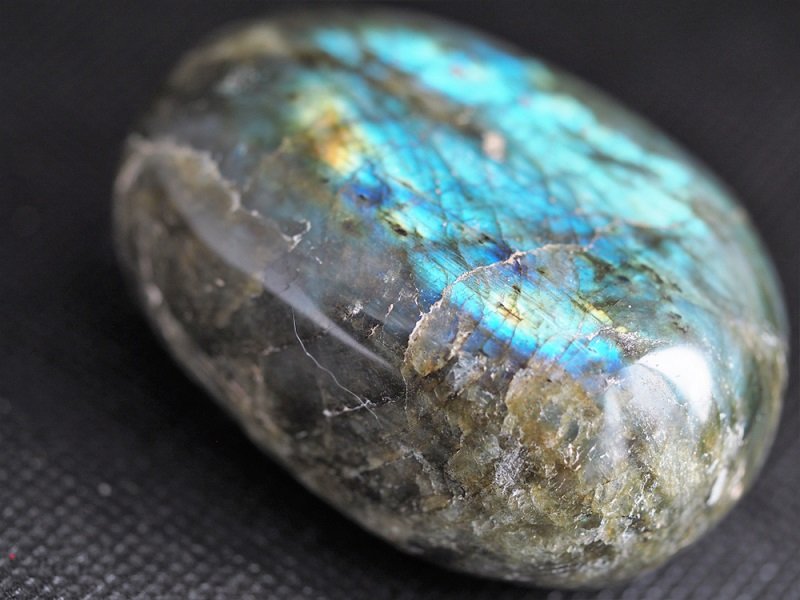
Labradorite is a feldspar mineral with a unique optical effect. When cut properly the internals of the stone appear to glow with a variety of colors, usually with a dominant blue or gold tone. Rainbow moonstone is simply transparent labradorite, it’s not actually a form of moonstone and displays an inner fire instead of the softer effect of normal moonstone.
Labradorite is a popular mineral these days, with large deposits in Madagascar and Canada producing great material regularly. It’s one of the least expensive stores with an optical effect since it occurs in large masses, most of the beauty comes down to the lapidary handling the material. Properly cutting labradorite is not the easiest task.
It’s also found in New York as both varieties, although the dominant variety is dark-colored labradorite. The region consistently produces impressive specimens, often without the need for any cutting at all. This makes New York one of the few regions in the US that contain proper labradorite.
The best material comes from Adirondack State Park and the surrounding areas. Make sure you’re legal to collect, but once that’s taken care of you’ll be able to look for your own impressive, fiery specimen.
8. Sphalerite
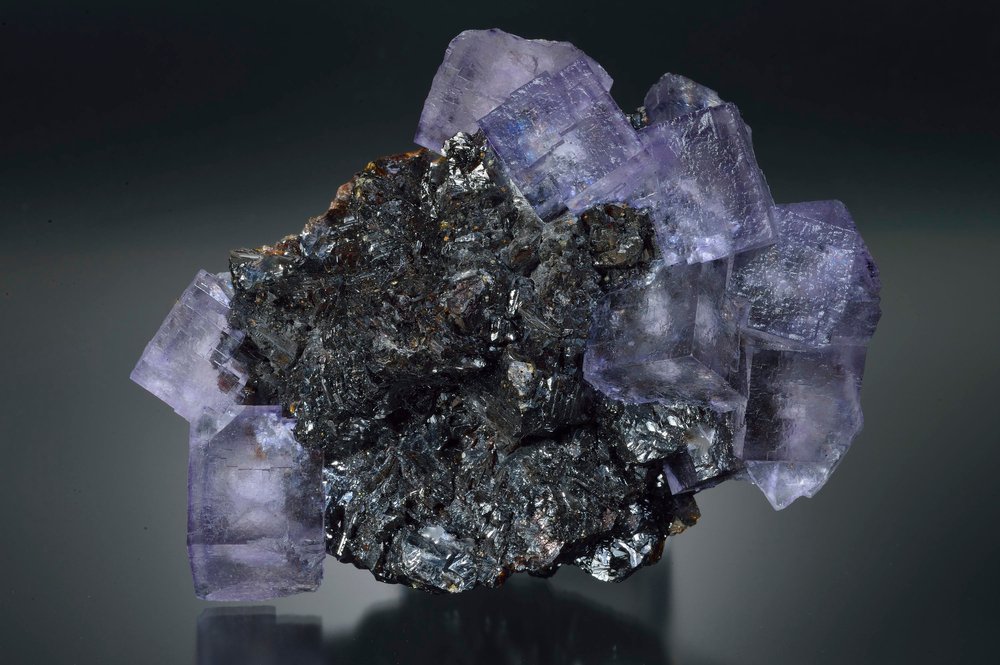
Sphalerite is the primary ore of zinc, usually associated with the lead ore galena and other sulfide minerals. Sphalerite can be found intermixed with igneous stone or as crystals on its own. These crystals range from pale yellow to deep red to black depending on the impurities contained within. More transparent specimens are usually more prized, since solid black sphalerite is much more common.
Zinc is an important metal, although it’s not one we think about much. It’s in our money, it’s used to coat steel and resist corrosion, and it’s the second component of brass. While a secondary metal to things like iron it’s still something prized for industrial uses. It’s used in dozens of industries across the globe.
New York tends to produce some of the better examples of this mineral. It tends to have a light yellow color and good clarity, making it distinct from the sphalerite of many other nearby regions. It’s still mined and processed in New York to this day, making it a vital part of the economy of the state.
Sphalerite can be found anywhere there’s a zinc mine nearby. The bulk of these mines are in Lawrence County and Wayne County. All you need now is a legal place to access the minerals and you’ll be good to go!
9. Halite
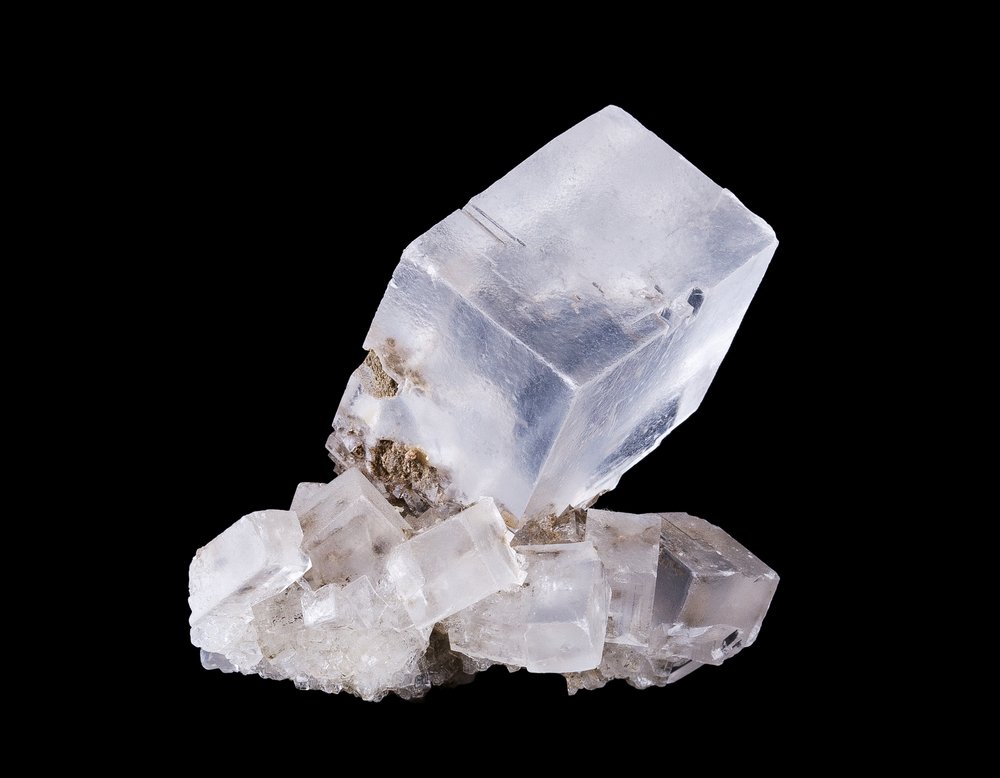
Halite is the mineral form of sodium chloride. It’s best known as rock salt, the bulk kind which you buy for uses other than cooking. It’s also broken down into smaller crystals and used as table salt frequently, which is what you get when you’re not buying sea salt for your cooking needs. It’s an important, and strange, mineral.
Halite appears as a clear-to-white cubic crystal. These crystals can be quite large in some formations and are often colored by impurities. If you’ve ever had Himalayan Pink Salt, for instance, you’ve had halite with a bit of strontium, molybdenum, and strontium. Local salts are often known for their inclusions, although some like green halite colored with malachite, shouldn’t be used at the table.
Halite is mined for salt purposes in New York. It’s on the more boring end of the halite spectrum, the majority of the material is simply clear or white and in simple formations. On occasion light pink or other colors show up but these are quite rare with samples from this state.
Halite is found throughout the state in many locations. The better samples will come from near the salt mines near the Finger Lakes. Finding a good sample may take some time, but if you’ve been looking to own a big chunk of rock salt then that’s where you’ll find it!
- Online rock and mineral club for collectors of all levels!
- Find community with like-minded rock and mineral enthusiasts.
- Monthly Giveaways!
- Free Access to Entire Digital Library of Products (current and future products)*


